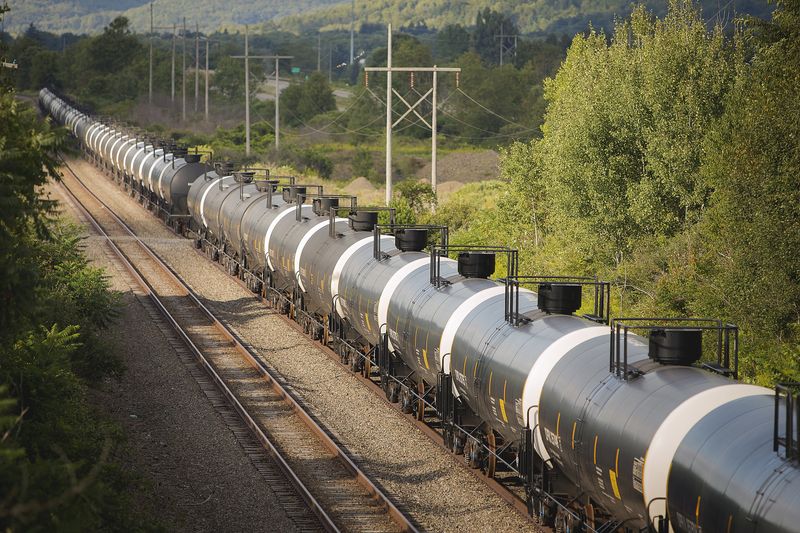Isolated U.S. Northeast could face energy shortages if rail shutdown proceeds
2022.09.14 13:54
[ad_1]

© Reuters. FILE PHOTO: Unused oil tank cars are pictured on Western New York & Pennsylvania Railroad tracks outside Hinsdale, New York August 24, 2015. Picture taken August 24, 2015. REUTERS/Lindsay DeDario/File Photo
By Laila Kearney and Laura Sanicola
NEW YORK (Reuters) – Northeastern U.S. states could face disruptions to fuel supplies if rail transport shuts down in coming days due to a labor dispute, industry workers and analysts said on Wednesday.
The northernmost East Coast states rely on railroad shipments to supplement pipeline deliveries from the U.S. Gulf. The region is among the largest fuel consumers in the nation, where U.S. Energy Information Administration (EIA) data shows that in July, inventories of and diesel reached the lowest levels in at least three decades.
Major railroads including Union Pacific (NYSE:) and Berkshire Hathaway (NYSE:)’s BNSF, must reach a tentative deal with three unions representing 60,000 workers before 12:01 a.m. on Friday to avert a shutdown.
Nationwide, stocks of distillates, which include heating oil and diesel, are at their lowest levels seasonally since 2000, according to EIA data.
The situation is more dire in New England and the Central Atlantic states. In that region, stretching from Maine to Maryland, stocks are at 16.6 million barrels, lowest seasonally since the EIA started keeping the data in 1990.
Some shippers, anticipating a shutdown, have already stopped transporting hazardous materials around the U.S., including fuel blending components.
“I already have companies that have been limiting their production knowing this was coming and now they’ll have to face the music and shut down,” said Tom Williamson, a railcar broker and owner of Transportation Consultants, which manages over 2,000 railcars.
He said he has been busy the past few days communicating with clients who are starting to shut down production of hazardous materials.
The upper Northeast relies on rail for shipments of , and fuel products more than other regions because of a lack of pipelines. New England receives most of the natural gas it uses to heat homes and light stoves by rail, according to consultancy RBN Energy, making it vulnerable to a stoppage.
“Over the past 20 years, regional imbalances between where products are produced and where they are demanded has increased,” said Debnil Chowdhury, vice president, Americas head of refining and marketing, S&P Global (NYSE:) Commodity Insights. “This has increased the need to transfer products from the Gulf Coast to the (Northeast).”
Pipelines carrying fuel and natural gas from Texas and other oil and gas-producing states of the U.S. South are already full, Chowdhury said, leaving little room to increase flows on the lines if a shutdown.
“All sorts of stuff is going to grind to a halt,” said one executive familiar with the region’s rail operations, who asked not to be named. “It’s going to be brutal.”
In July, governors of New England states wrote a letter to U.S. Secretary of Energy Jennifer Granholm, warning her that the region faced surging winter heating bills due to lacking natural gas pipeline connectivity.
They also asked the Biden Administration to suspend the Jones Act, which requires goods moved between U.S. ports to be carried by ships built domestically and staffed by U.S. crew, for the delivery of LNG for at least a portion of the upcoming winter.
In 2021, the six-state New England region got the majority of its power, or 46%, from natural gas, according to ISO New England, the region’s power grid operator. On the coldest winter days, the grid relies as well on oil to fuel a much bigger percent of power generation.
[ad_2]
Source link








